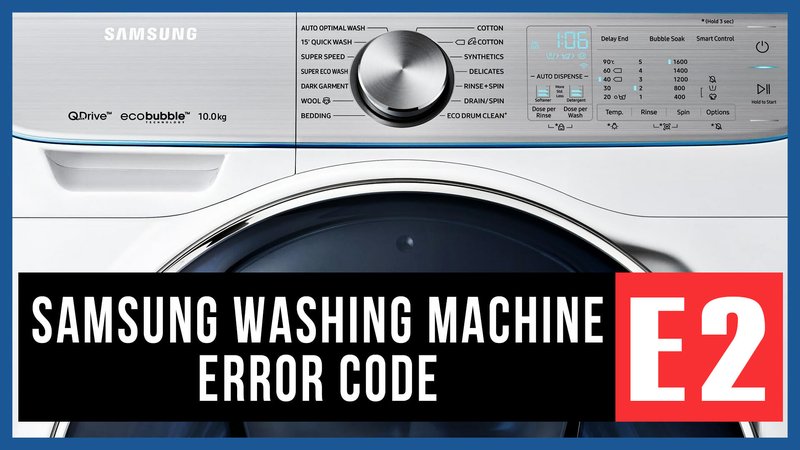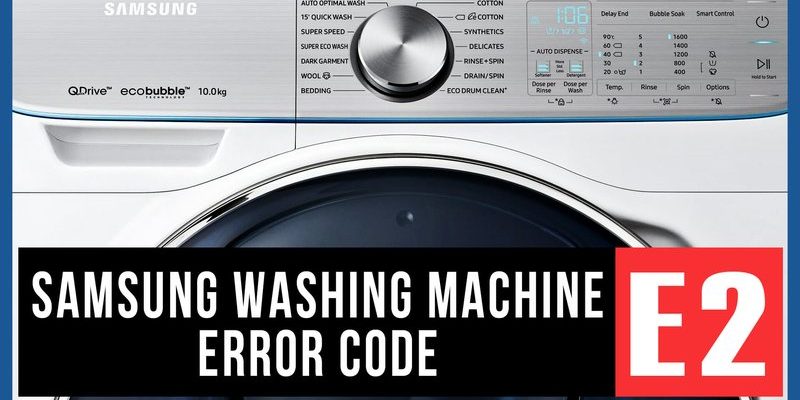
Now, you might be wondering, why does this happen? Well, there could be a few reasons your washing machine is refusing to drain properly. It could be something as simple as a kink in the drain hose or a blockage caused by lint or other debris. Or it could be a more technical issue like a faulty pump or a malfunctioning sensor. Whatever the case, understanding how to prevent this error from popping up in the future can save you a lot of headache and maybe even a call to the repair guy.
Understanding the Drainage System in Your Samsung Washing Machine
Before diving into prevention tips, it’s helpful to understand how the drainage system of your Samsung washer works. Think of it like the plumbing in your home. Water flows into the machine, cleans your clothes, and then needs a way out. The drain hose is like the exit pipe, allowing it to move out of the washer to keep everything running smoothly.
When the drain hose is blocked, it’s as if someone has closed a door in the path of water trying to leave your machine. The washing machine’s sensor detects this blockage and flashes the E2 error code on the display. Your job is to figure out where this ‘door’ is closed and how to open it. In most cases, it’s a buildup of soap, lint, or even small clothing articles like socks that are causing the blockage.
Improper installation can also play a role. If the hose isn’t positioned correctly, gravity can’t help it do its job. In a way, it’s like trying to slide down a slide that’s upside down—it just doesn’t work! By ensuring your machine is set up properly, you can prevent the E2 error from appearing. Keep reading to find out how you can do that yourself.
Regular Maintenance: The Key to Prevention
Just like your car or any other appliance, regular maintenance is crucial for the longevity of your washing machine. Cleaning the drain hose and pump filter routinely can go a long way towards preventing that annoying E2 error code. You see, over time, things like lint, hair, and even small pieces of fabric can accumulate and create a blockage. Regularly cleaning these components is akin to flushing out the leaves from your gutter—it keeps things flowing smoothly.
To clean the pump filter, you usually need to locate it at the bottom of your machine. It’s often behind a small door or panel. Once you find it, gently pull it out and remove any debris you find. You might be surprised what’s hiding in there—coins, buttons, and other small objects can find their way into the pump filter!
For the drain hose, make sure it’s clear of any visible debris and that it’s positioned correctly. Occasionally, a simple visual inspection can reveal if something’s out of place. Adjust the hose to ensure there’s no kink or bend obstructing the water flow. And remember, a little vigilance now can prevent bigger problems later.
Learning from Common Mistakes
One common mistake many users make is overloading their washing machine. Imagine trying to stuff too many clothes into a small suitcase. Besides making the machine work harder, overloading can lead to improper drainage, putting unnecessary stress on the drainage system. To avoid this, stick to the recommended load size.
Another oversight is using the wrong type or amount of detergent. High-efficiency washers, like many Samsung models, require low-sudsing detergent. Using too much or the wrong kind can lead to excess suds, which might block the drainage path. Think of it like pouring too much soap into a dishwater—suddenly you have bubbles everywhere!
Lastly, it’s easy to forget that even obstructions outside the machine can cause problems. Ensure that your home’s plumbing is in good condition as well, since issues with the sink or water outlet can affect your washer’s performance. Addressing these common pitfalls can significantly reduce the risk of encountering the E2 error.
Helpful Steps for When the E2 Error Appears
If you do encounter the E2 error, don’t panic. It’s not the end of the world. Start by checking the drain hose for any obvious obstructions. Gently straighten any kinks and ensure it’s not twisted. If that doesn’t resolve the issue, move on to clean the pump filter. Remember, this is usually at the bottom of the machine, so it might require a bit of maneuvering to access it.
Once you’ve cleaned and checked these key components, restart your washing machine to see if the error clears. Often, these simple fixes are enough to get it back to working order. If the error persists, it might be time to consult the manual or give the customer service team a call. They can provide further guidance, and in some cases, it might require the expertise of a professional technician.
In summary, understanding how to prevent the E2 error involves regular maintenance and awareness of common pitfalls like overloading or using excessive detergent. By treating your washing machine with a little care and attention, you can keep it running smoothly and effectively reduce those pesky errors from disrupting your laundry day.
